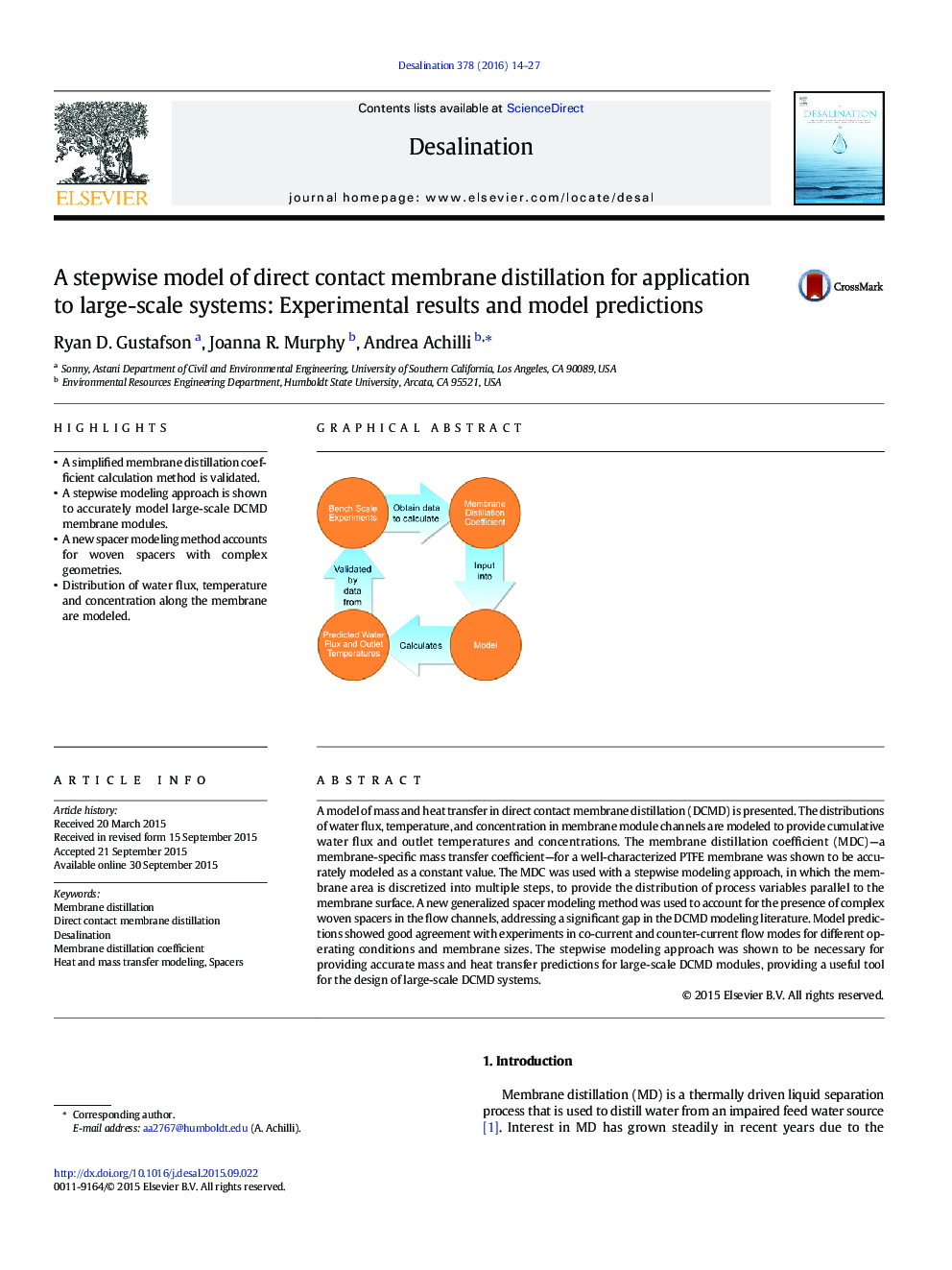| Article ID | Journal | Published Year | Pages | File Type |
|---|---|---|---|---|
| 622948 | Desalination | 2016 | 14 Pages |
•A simplified membrane distillation coefficient calculation method is validated.•A stepwise modeling approach is shown to accurately model large-scale DCMD membrane modules.•A new spacer modeling method accounts for woven spacers with complex geometries.•Distribution of water flux, temperature and concentration along the membrane are modeled.
A model of mass and heat transfer in direct contact membrane distillation (DCMD) is presented. The distributions of water flux, temperature, and concentration in membrane module channels are modeled to provide cumulative water flux and outlet temperatures and concentrations. The membrane distillation coefficient (MDC)—a membrane-specific mass transfer coefficient—for a well-characterized PTFE membrane was shown to be accurately modeled as a constant value. The MDC was used with a stepwise modeling approach, in which the membrane area is discretized into multiple steps, to provide the distribution of process variables parallel to the membrane surface. A new generalized spacer modeling method was used to account for the presence of complex woven spacers in the flow channels, addressing a significant gap in the DCMD modeling literature. Model predictions showed good agreement with experiments in co-current and counter-current flow modes for different operating conditions and membrane sizes. The stepwise modeling approach was shown to be necessary for providing accurate mass and heat transfer predictions for large-scale DCMD modules, providing a useful tool for the design of large-scale DCMD systems.
Graphical abstractFigure optionsDownload full-size imageDownload as PowerPoint slide
